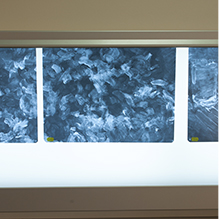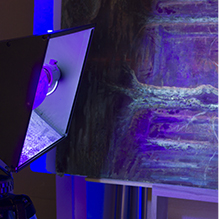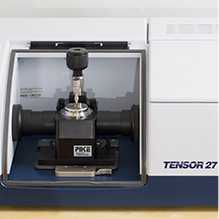Expertise
Expertise is a complicated procedure, which takes a month in average and consists of several stages. During this time professional experts: art historians and technologists co-operate over an artwork.
Highly qualified specialists in arts from different Russian museums make an expertise of artworks. You will find the complete list of specialists on the Experts page.
Methods and equipment
Each expertise consists of two parts – stylistic and technical examination.
First, an artwork is examined from the point of view of the similarity with the basis of reference material. P.M Tretyakov Independent Art Research & Expertise (IARE) continuously collects reference materials from archives and museum funds to carry out such analysis.
On the stage of technical examination, an artwork is inspected with special laboratory equipment. P.M. Tretyakov Expertise owns a modern well-equipped laboratory.
-

Zeiss optical binocular system (Microscope)
Microscope gives the most complete knowledge of the surface of an artwork. After 375-x enlargement, it is possible to carry out a detailed examination of canvas, soil, paint layer and a method of applying a signature. For example, examination with the microscope allows to determine the borders of author’s paint layer and restoration notes.
-

X-ray examination
Analysis of X-ray films and comparison of the results with reference materials allows to compare the texture of author’s brushstroke, manner of constructing perspective etc.
-

Infrared examination
IR-camera is the most important gadget for detection of a preliminary sketch (pencil, coal, brush). With IR-camera, it is possible to decrypt half-erased signatures on the underframe or on the backside of the canvas
-

Ultraviolet examination
UV examination graphically demonstrates presence of later author’s or restoration interferences in a painting. Specific luminescence of the number of pigments in the UV rays can denote the period of creation of the work or artist’s preferences in paints.
-

X-ray fluorescence analysis
With portable X-ray fluorescence analyzer X-MET 7500 (OXFOR INSTRUMENTS, range of measured elements from Mg to U) it is possible to carry out an element analysis of a certain area of a painting quickly and without a preliminary selection. As a result, we measure percentage mass ratio of all chemical elements, which an examined area consists of. Thereby, it is possible to identify preliminarily ceruse, soil, which were used for the painting, and judge about the presence of different non-organic pigments. An XFA method also helps to identify the consistency of metallic alloys in different kinds of analysis, for example, in analysis of jewelry.
-

Micro-chemical examination of consistency of pigments and soil filler
This analysis allows to identify consistency of the soil (for example, cretaceous, clue, oil etc.), and examine combinations of chemical elements, which are included in paint paste and can define the date of creation.
-

Pigment examination with the polarizing microscope
Polarizing microscopy in the transmitted light with using of polarizing aggregative laboratory microscope POLAM L-213M allows identifying in the sample of the paint layer presence of different non-organic pigments, specify consistency of ceruse, soil filler, and, sometimes, prove the presence of organic pigments (for example, the presence of phthalocyanine colorants).
-

Examination of organic and binding pigments using IR-spectroscopy
Method of IR-spectroscopy with Fourier transformation (FTIR) and the system and frustrated total internal reflection system (ZnSe-glass) on spectrometer Tensor 27 (Bruker) provides information on bindings between soil and paint, used polishes and organic pigments. Comparison of physical and chemical parameters of oil binding in the examined samples with reference dated samples allows quite accurately defining the date of creation of an artwork.

